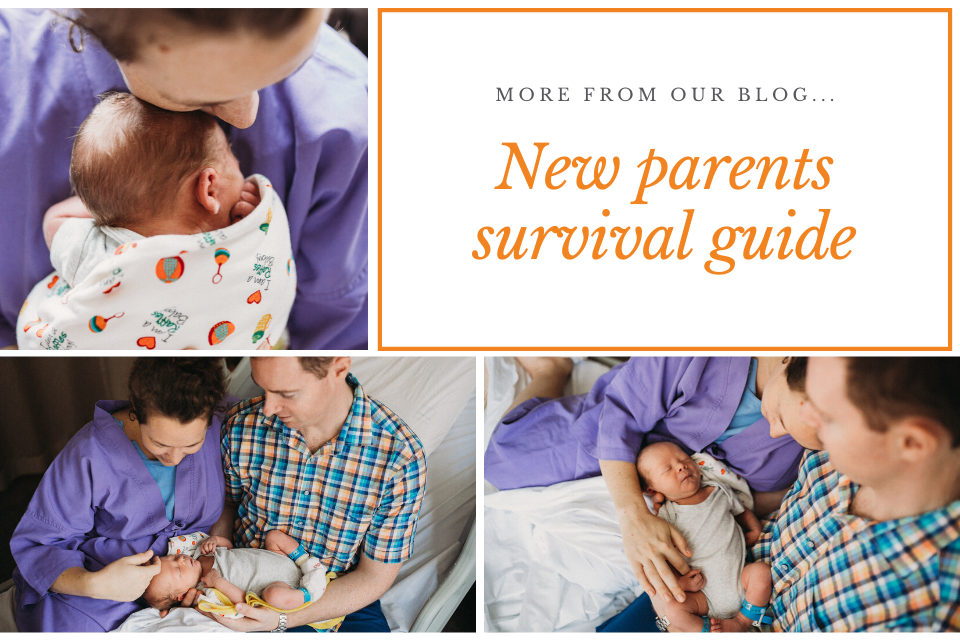
When to Switch Your Infant's Car Seat: 3 Signs to Watch Out For
When to Switch Your Infant's Car Seat: 3 Signs to Watch Out For
With the technology and safety features being put into each car seat becoming more advanced these days, parents are left with the daunting task of choosing the right fit for their child. Whether it’s safety, comfort and convenience, car seats are designed to make child transportation easier and safer. But from your first infant seat to a convertible car seat to a booster seat, the amount of choices can make even the most discerning parent-shopper’s head spin! But what about knowing when to switch a car seat? That must be a whole new level of complicated!
These days, with so many car seat options and configurations available to accompany a child into their growing years, it can be confusing for parents to know when it really is time to switch seats. As such, it is important for mommies and daddies to make the informed decision of the right time to get a new one — especially for infants.
In this article, we will tell you the complete low-down on an infant seat’s functions, age compatibility and the different signs to watch out for that can give you a good idea if your baby starts to outgrow or has already outgrown their infant seat — keep reading!
What Is An Infant Seat?
So what exactly is an infant car seat? To start, these sturdy rear-facing car seats are traditionally where you place your baby in as you make your way home for the first time from the hospital. Other than having a rear-facing feature, these seats also come in a bucket-style built that most parents use through the first year of the baby’s life and up until the second year in some cases.
Many infant car seats also come with the feature of being attached directly to a stroller for added ease and comfort while walking. This car seat type can also be attached to a base latched into your car, making the seat easy to be taken in and out without disturbing your baby’s much-needed sleep.
These seats are also known to use a five-point harness and come with a newborn insert to use from birth until the child is between 11 and 15 pounds (check the manual for exact instructions, but generally if the baby’s shoulders don’t reach the straps without the insert, you should use it).
As for reclining options? Infant seats has several. However, if you have a newborn, it is advised that you position the seat in its most reclined angle possible to give your baby more added comfort and security. So if your little one continues to cry in the car, go from having a steep setting to a more reclined position.
 Trying to cope with a newborn? Find out Alex's newborn survival tips to keep you sane.
Trying to cope with a newborn? Find out Alex's newborn survival tips to keep you sane.
When Do Babies Outgrow Infant Car Seat?
From specific maximum weight and height limits to bulky and awkward car seat scenarios, here are some of the tell-tale signs that signal your little one might have already outgrown their car seat:
1. Reaching the height and weight limit- One common sign that you should always pay close attention to is when your baby starts reaching or exceeding the maximum height and weight limit for the infant car seat. The average age to consider before making the switch is approximately 2 years, but more than the age, it really depends on how tall and heavy your tiny one has gotten since then. Here are four popular infant seats and their weight limits and height requirements that you can check for reference:
- Graco Snugride 30: 1.8kg to 13.6 kg, up to 76.2 cm tall
- Britax B-Safe: 1.8kg to 15.8 kg, up to 81.2 cm tall
- Maxi Cosi Prezi: 1.8kg to 13.6 kg, up to 73.6 cm tall
- Chicco Keyfit 30: 1.8kg to 13.6 kg, up to 76.2 cm tall
2. When the top of your baby’s head is already exceeding the car seat’s upper part when buckled in
- Another sign that it might be time to make the switch to rear facing toddler seats is when you notice the top of your tiny one’s head reaching the top part of the car seat whenever buckled in. If this is the case, then chances are that the height limit has already been reached and you should now be looking at a booster seat or the next-stage convertible car seat for your next purchase.
3. When the seat gets too heavy to carry around
- As a parent, you are tasked with the priceless responsibility of carrying your child around — whether for leisurely walks or a jam-packed overseas vacation with the entire family. As such, you will start to notice when your infant’s car seat begins to show a bit of weight that is out of the ordinary you’ve been used to. If this is the case, fret not! It can only be a clear sign that your baby is growing — and so should your plans of switching to the next perfect car seat for your upcoming activities.
 Not sure how to fit three kids (including a newborn) at the back of a taxi? Find out how to fit three across in a taxi.
Not sure how to fit three kids (including a newborn) at the back of a taxi? Find out how to fit three across in a taxi.
Making the Right Choice
To remember these tell-tale signs that signal your baby has already started outgrowing their car seat, just pay attention to the height and weight of your child whenever they’re snuggled and buckled in the seat. Remember: the first step in making your car seat journey safer and better begins with making informed decisions!
If you're in the market for car seats for your children, or if you simply want to know more about child passenger safety, then give us a call at Taxi Baby Co. at Taxi Baby Co.! We put and keep your child's safety as our top priority. Our team would be happy to help with whatever you and your child need to keep family travel convenient and stress-free.
